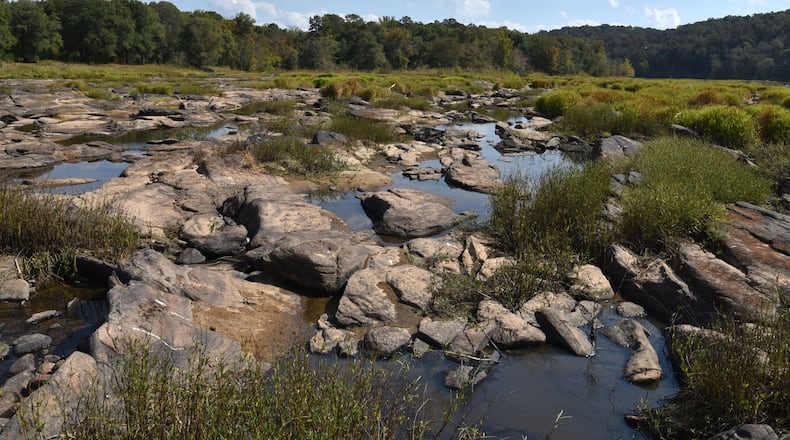AT A GLANCE
The burden of proof in the water wars case rests with Florida, which must convince the special master appointed by the U.S. Supreme Court that its environment and economy have been harmed by too little water from Georgia.
Florida began its case Monday morning, and Georgia followed. Witnesses will be called, including Harold Reheis, who ran Georgia’s water programs from 1992 to 2003.
Even if the Supreme Court takes up the case upon the special master’s recommendation, there’s still time for Georgia and Florida to work out a deal.
Georgia portrayed Florida on Monday as a long-running legal opportunist finding fault with Atlanta lawn-lovers, South Georgia farmers, federal engineers — anybody but the Sunshine State — for the economic and ecological harm done to the Apalachicola River basin.
Florida accused Georgia of knowingly hoarding Chattahoochee and Flint river water, and of “illegally” watering 90,000 acres of farmland to the detriment of Florida’s oyster industry and riverine ecosystem.
And so it went on the first day of the long-awaited “water war” trial between long-familiar adversaries who trekked to chilly Maine for the trial sanctioned by the U.S. Supreme Court. The special master appointed by the high court to oversee the case — the bow-tied, no-nonsense Ralph Lancaster Jr. — will hear possibly two months of testimony from the many attorneys and witnesses assembled by Georgia and Florida who’ve waged war over water for 27 years.
The stakes are extremely high, not only for the two combatants. How states, primarily east of the Mississippi, divvy up an increasingly rare commodity — river water — in a steadily warming climate depends in large part on how this case is resolved.
One courtroom wag whispered as the trial began that “this is the future of water right here.”
First up was Philip Perry, the lead Florida counsel, who said the “upstream consumption of water in Georgia has exploded” since the 1960s and that the Peach State has done little to curb its profligate consumption, let alone share enough with the Sunshine State. An “equitable apportionment” of the Chattahoochee and Flint rivers serves as the legal crux of this case.
But first Florida has to prove that Georgia is to blame for the paucity of fresh water that is harming sturgeon, mussels and oysters throughout the Apalachicola River basin, particularly during droughts.
“The ecosystem is changing because the river has significantly lower flows of water,” Perry told Lancaster, who’ll serve as judge and jury in the case. “When you get less water in the bay, it becomes a saltwater lagoon and not an estuary, (and) the species suffer. It causes a fundamental change to the ecology of the bay.”
The Apalachicola Bay oyster industry is a shadow of its former self with few fishermen, four-bag limits and an annual haul barely reaching $5 million a year. Florida says a lack of river water from Georgia is the root cause. Oysters thrive on a healthy balance of fresh and salt water, a briny cocktail increasingly absent in the bay.
“If it wasn’t for the reservoir, and if the flow was the way God intended it to be, then the bay and the oyster industry would thrive,” said Apalachicola Mayor Van Johnson Sr., who attended the trial. “Man is messing with God’s plan. And any time man starts messing with nature, then you end up with litigation.”
Johnson studiously avoided casting blame on Georgia, Florida or the U.S. Army Corps of Engineers ,which controls the river-harming dams and locks along the Chattahoochee River. Perry didn’t. He singled out Georgia government, political and farm officials who implemented a drought-insulation plan in 2000 yet failed to adhere to it.
Georgia, in 2012, placed a moratorium on new irrigation wells for the Flint River, other streams and the underground aquifer below South Georgia. But the state issued an additional 237 permits allowing farmers to get water from deeper aquifers.
Florida further charged that southwest Georgia cotton, peanut and soybean farmers are “illegally” irrigating up to 90,000 acres of farmland without the state’s permission. Hogwash, said Jeffrey Harvey, the legislative director for the Georgia Farm Bureau. Reached by phone in Macon, 1,200 miles away, Harvey said it appears Florida is tallying the number of acres using irrigation and not the number of wells or how many gallons are allowed under Georgia rules.
Craig Primis, the lead attorney for Georgia, said Florida is relying on “questionable science,” “fiction,” and “greed and politics” instead of cold, hard facts to make its case. He blamed the oyster industry’s near-death on Florida for allowing oystermen from Florida to Texas to rake its beds dry of oysters in 2010.
He highlighted a newly released U.S. Fish and Wildlife Service report claiming little damage to Apalachicola River mussels. And he singled out the U.S. Army Corps of Engineers for building dams and locks that curtail water flow; dredging the Apalachicola and its sturgeon- and mussel-loving food sources; and, ultimately, controlling how much water flows from Georgia into Florida, particularly in times of drought.
The corps “has a long history of physical damage to this basin that is not attributable to Georgia,” Primis said. “There is simply no possible way to deliver a predictable flow of water to Florida in times of drought without the corps of engineers.”
About the Author
Keep Reading
The Latest
Featured


